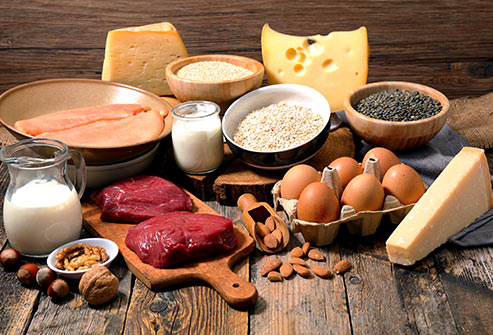Obesity is a major health issue worldwide and increases the risk of several chronic conditions, including cardiovascular disease, hypertension, diabetes, and cancer. In recent times two types of diets have been for weight loss – Ketogenic diet and Paleo diet. Ketogenic (or keto) diets are characterized by a marked reduction in carbohydrates (usually to <50 g/day) and a relative increase in the proportions of protein and fat. The Ketogenic diet comprises of 70-80% fat, 5-10% carbohydrate and 10-20% protein, while the Paleo diet has 30% protein, 40% fat (from mostly monounsaturated and polyunsaturated fats) and 30% carbohydrates. This varies from a normal diet that comprises of 20-35% fat, 45-65% carbohydrate and 10-35% protein.
How the body handles a ketogenic diet
In our body glucose is the main source of energy for all cells and is obtained by consuming carbohydrates rich foods. The hormone Insulin is responsible for the proper use of glucose as a source of energy by the body. When carbohydrate consumption is low initially glucose in the muscles gets utilized and later stored glucose from the liver is used up for energy. If this scenario continues for 3 to 4 days and once stored glucose is fully depleted, blood levels of insulin hormone decreases and the body begins to use fat as its primary fuel. The liver produces ketone bodies from fat, which are used in the absence of glucose. When ketone bodies accumulate in the blood, this is called ketosis. Healthy individuals naturally experience mild ketosis during fasting and very hard exercise.

What to eat and what to avoid in a Ketogenic diet?
Healthy vegetables and fruits that are rich in natural sugars and carbohydrates are limited in this diet.
Foods included in the keto diet are:
- Chicken, turkey, beef, pork, lamb,
- Fish and seafood, especially fatty fish like salmon, sardines, tuna and mackerel
- Eggs and whole milk
- Nuts and oil seeds
- Whole milk cheese, butter, paneer, yogurt
- Avocados
Foods to be avoided in a keto diet are:
- Cereals and Grains (e.g. rice, oatmeal)
- Starchy vegetables, including corn, potatoes, and peas
- Low-fat dairy products
- Most fruits, except for lemons, tomatoes and berries
- Pulses and legumes (Beans, peas, lentils)
- Sugary (Juice and soda) and alcoholic beverages (wine, beer, and sweetened cocktails)
- Snack foods, such as potato chips, pretzels, and crackers
Benefits versus Harms
Some immediate benefits of a Ketogenic diet are weight loss, reduced blood glucose level and increase in muscle mass. However, an increase in LDL or bad cholesterol, blocks in the coronary arteries due to excessive fat consumption, renal failure and liver dysfunction due to fat accumulation in the liver have been identified as the harmful effects of this diet.
Prolonged Ketogenic diet causes the following side effects in the body
- Constipation
- Dehydration and loss of electrolytes
- Kidney stones
- Hypoglycemia
- Bad breath
- Nutritional deficiencies
- High Cholesterol and an Increased Risk for Heart Disease
- Several vitamin and mineral deficiencies, decreased bone mineral density, and gastrointestinal distress
- People with kidney disease or a history of disordered eating should avoid the diet, and people with type 1 diabetes may want to avoid it
Ketogenic diet may be associated with some improvements in obesity, type 2 diabetes and HDL cholesterol levels, but these effects are usually short lived. Insulin resistance is also a potential negative effect.
If you’re at risk for heart disease, one overarching factor to consider is that the keto diet is restrictive, and it’s tough to stick to a restrictive diet. People go on keto and in the short term lose a lot of weight, but it’s not sustainable. So when they go off from keto, they regain the weight back. This yo-yoing or up and down effect of body weight is also not healthy in the long run.
In summary, the ketogenic diet is not free of side effects. Eating a well-balanced diet which includes all the food groups, that is moderate carbohydrate with high fiber foods such as fruits, vegetables and whole grains, healthy fats and proteins along with adequate water intake helps to achieve health goals without any complications. One should always talk to their doctor before beginning any new diet and also consult a dietitian to ensure they are getting enough nutrients through diet to keep them healthy and free from disease.